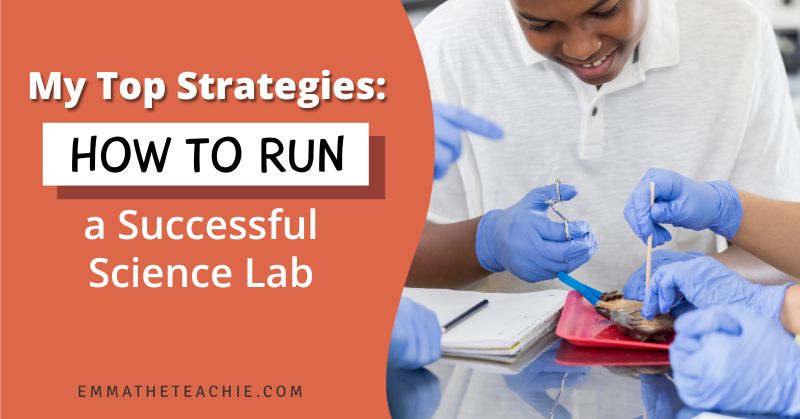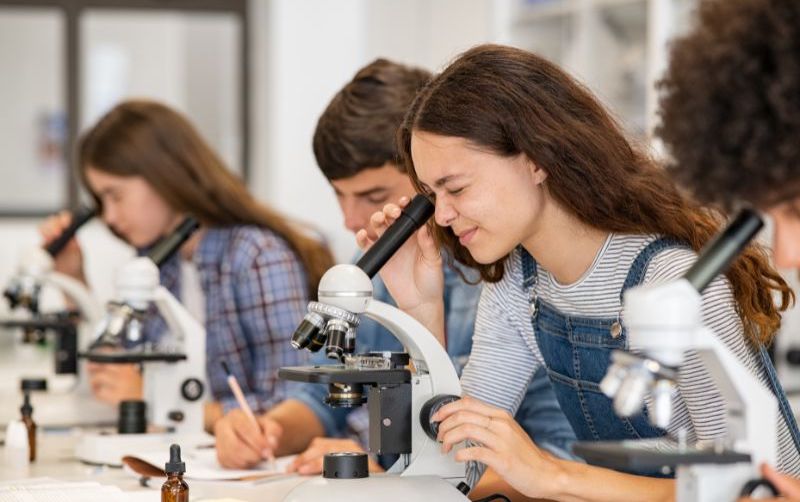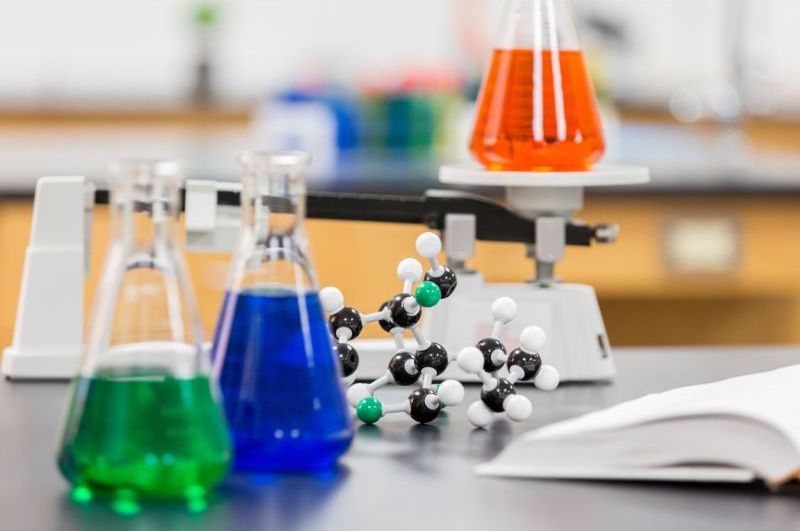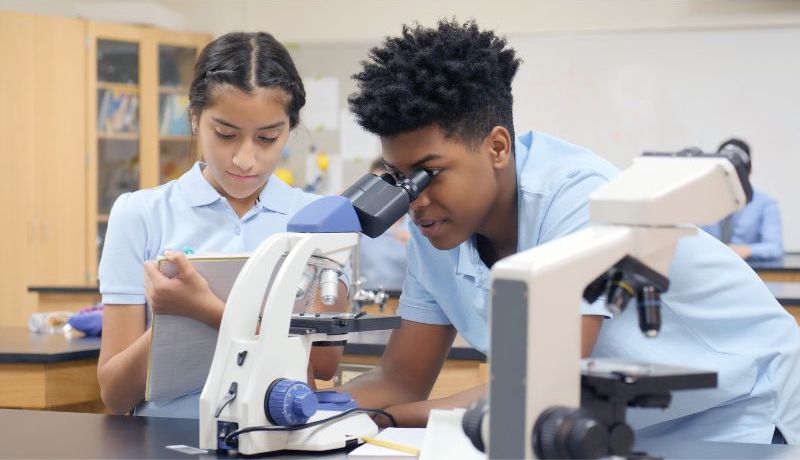
My Top Strategies for How to Run a Successful Science Lab
As you gear up for another exciting school year, it’s time to delve into the heart of science education: the laboratory.
I want to ask you a question and please be honest…
Who has ever been intimidated by the laboratory?
I should see most, if not all, hands up in the air! I’m not ashamed to admit: I have been intimidated by running labs many, MANY times over the years.
Whether you’re a seasoned pro or a newbie within the world of lab management, it is a challenge to run a successful lab. Especially if it’s the first time you’ve run it. There is a lot going on, and, of course, student safety is paramount.
Today I’m sharing strategies for how to run a science lab successfully. These will help you create a safe, engaging, and enriching experience for both your students.

Let’s Talk Organized Supplies
Imagine the excitement on your students’ faces as they step into a well-organized lab, filled with neatly arranged equipment and supplies.
Keeping your supplies organized not only streamlines the lab process, but also builds a sense of responsibility and respect in your students.
Well organized supplies are probably the most important part of how to run a science lab successfully.
There are many ways to prepare and organize your laboratory supplies.
First, create an inventory checklist of essential supplies and regularly replenish them. If I’m being honest, I keep this in a paper format and a digital format because we are required to keep a physical copy per our health standards.
Even though there are two versions of the supply inventory, they go hand-in-hand. Whenever I change a page digitally, I just print it out and put it in the binder.
Another option would be to enlist the help of your students. They can help maintain and categorize materials throughout the school year, turning lab preparation into a collaborative activity.
Next, consider how you want students to collect the lab materials. Are they already set out for students in trays? Or do students need to find each piece of equipment?
I prefer the latter – it encourages student independence and ownership in the lab, and minimizes teacher workload. Be sure to include some equipment scavenger hunts during the start of the year to get students familiar with where equipment is stored.
Finally, consider how you want the equipment returned. Where possible, I get students to clean and carefully return equipment to its correct location.
Managing equipment is part of any real laboratory, so it’s great to get our students involved in this process.

Managing Student Behavior in the Lab
When it comes to running a successful science lab, lab safety is one of the most important considerations. You MUST set your expectations for behavior from the first day of class.
I really like to turn this around and have students give input about their ideas of lab safety. I have found this works much better than talking to them through a lecture.
In the past, I have had students make their own rules posters to hang around the room or have them act out what they think are important lab safety rules. From personal experience, the students enjoy acting out skits the best, and it allows for some comedic relief during those first few days of the class.
If you’re looking for a review activity, you can also check out my Lab Safety and Lab Equipment Doodle Notes! These would make a great activity at the beginning of the school year.
Be sure to have students sign a safety contract, like this one from Flinn Scientific.

Figure Out Your Timing in the Lab
As science teachers, we all know the hustle of lab days. There are so many things to consider when it comes to time. You need to set up the lab, figure out how long it will take students to complete it, and allow for cleanup time.
It can be exhausting! To be honest, the perfection of timing takes experience.
The balance between efficiency and exploration of science is delicate, but achievable. As you plan lab activities, consider all phases of the process: setup, instruction, experimentation, data collection, and cleanup.
One of the hardest parts is allocating sufficient time for each phase, making sure that students can immerse themselves fully in the experiment.
A rule of thumb that I have learned is to double how long you think a task will take students. It is better for students to have more time than not enough time.
By allowing students the proper amount of time in the lab, you are encouraging students to engage deeply, ask questions, and discuss their findings, which is the true meaning of science.

Assign Roles in the Lab
In my classroom, I pick my student groups. Each month, I will rotate the student groups so they are constantly working with new people.
I believe this is an important lesson for students to learn as they will need to navigate working with diverse groups of people throughout the rest of their lives. Since the students are working with students that they may never have talked to before, there could be some communication obstacles.
I guide students through this collaboration by assigning roles within lab groups. Since each student has a role, they are responsible for a set portion of the lab.
There are a variety of roles you can assign, but my favorites are:
- experiment leader
- data recorder
- equipment manager
- safety officer
It is important to note that I change the person assigned to these roles in each lab.
By rotating responsibilities, students get a chance to explore different aspects of the scientific process and develop a diverse skill set. This approach also encourages students to work together, share their expertise, and cultivate leadership skills.

Building a Strong Foundation with Beginning of the Year Checks
In order to lay a solid foundation in the lab, the beginning of the year is crucial for us science teachers. The tone we set at the beginning will carry throughout the year, whether that be positive or negative.
In recent years, I have begun conducting beginning-of-the-year lab checks to familiarize students with safety protocols, lab expectations, and proper equipment usage. In my classroom, I have done this as a station activity during the first weeks of school.
Some of these stations have specific hands-on activities, such as measuring liquid with a graduated cylinder, using a microscope correctly, measuring mass with a balance, and so much more.
Not only does this provide students with hands-on experience in the lab, but it also allows me to formatively assess where students’ skills are. I can then use this data to effectively plan my labs throughout the year.
You can also find out some key information to ensure you’re meeting students’ needs and keeping them safe:
- Do they wear contact lenses?
- Do they have any allergies? (Very important for labs involving food)
- Are they color blind? Etc.
By dedicating time to this foundational process, you are creating a confident and knowledgeable group of students ready to tackle more complex experiments as the year progresses.

A Successful Science Lab is at your Fingertips
I hope these strategies have given you some ideas of how to run a science lab successfully.
As you are about to begin another year of scientific exploration, remember that a successful science lab isn’t just about conducting experiments – it’s about fostering a culture of curiosity, safety, and collaboration.
So, here’s to a year of discovery, inquiry, and success in the science lab!
My task for you – plan a lab for this week, using the ideas from this blog post to make it your best lab yet.
I hope you have a fun sciencey day,
P.S. If you liked my strategies for how to run a science lab successfully, then why not share them with your teacher bestie? Go on, share a link and spark a discussion with them – what’s working in your labs and what isn’t? These are the best conversations to have!






